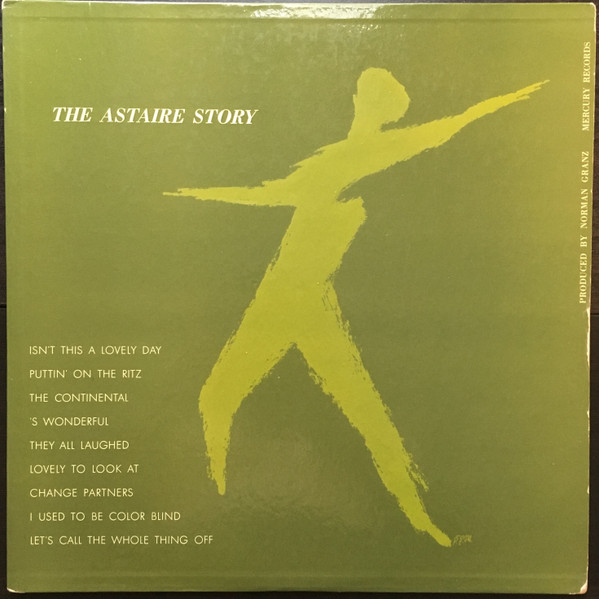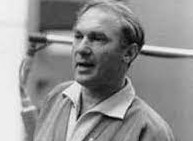As a producer and impresario, Norman Granz was full of great ideas. Among his inspired initiatives were Jazz at the Philharmonic; the documentary Jammin’ the Blues; pairing two of his heroes, Nat King Cole and Lester Young in 1942, then again in ’46, for their only studio recordings together; recording Charlie Parker in settings ranging from big band to Latin to “Bird With Strings”; bringing together a triumvirate of alto saxophonists, Parker, Johnny Hodges, and Benny Carter, for an in-studio jam session in 1952; presenting Oscar Peterson’s Carnegie Hall premier in 1949; producing Ella Fitzgerald Sings the Cole Porter Songbookin 1956, followed by seven more definitive songbook albums; and coming out of retirement in 1973 to found Pablo Records, named for his friend Picasso, whose work he collected, so that mainstream greats like Count Basie, Zoot Sims, Milt Jackson and Roy Eldridge would still have a home on record.
Lesser known but no less inspired is the session Granz produced on Fred Astaire in 1952 with a sextet led by Peterson. The Astaire Story was a four-LP set devoted to songs that Astaire had introduced on stage and screen between 1926 and ’44. Granz’s love for Astaire dated back to his high school days in the mid-‘30’s when he saw Top Hat over 20 times and took tap dancing lessons in the hope that he might win a spot in a chorus line in an Astaire movie. Alas, as Ted Hershorn quotes Granz in his impressively comprehensive biography, Norman Granz: The Man Who Used Jazz for Justice, “It all came to nothing as far as becoming a professional, but…it brought me closer to my idol Fred Astaire.”

Astaire, dubious of there being much interest in his singing, initially turned Granz down when he phoned him with the proposal to produce a signed and numbered, limited-edition set with a sale price of $50. But that same night, the two ran into each other at a Duke Ellington concert where Astaire was accompanied by his son, who was a fan of Jazz at the Philharmonic. Granz used this serendipitous entree to persuade Astaire to give it a second thought. “As he explained his purpose and how it would be done, I began to see it,” Astaire recalled for a reissue of the session in 1988. “The idea was attractive to me because of his attitude and approach to the concept.”
The recordings took place over the course of 15 sessions and featured 34 songs by Irving Berlin, Cole Porter, George and Ira Gershwin, Jerome Kern and others, and on “Jam Session for a Dancer” and three more titles, Astaire cuts some rug. Peterson’s great trio with Barney Kessell and Ray Brown was augmented by drummer Alvin Stoller, trumpeter Charlie Shavers, and tenor saxophonist Flip Phillips. Not surprisingly, Astaire exhibits an affinity for jazz-oriented phrasing and sounds as relaxed and insouciant as his accompanists, who get plenty of solo space on the session. Astaire acknowledged his sidemen with a gift of gold identification bracelets inscribed, “With thanks, Fred A.”
Additionally, according to Hershorn, Astaire was so impressed with Granz that he offered to buy into his record company. “I’m flattered, Fred,” began Norman’s reply, “I think it is very generous of you, [but] I am totally sure you would lose your investment. My company is run on a strange personal basis, as I have no intention of making money, but rather making unique and special recordings. My concerts support the record company [which] is not successfully self-supporting.”
Nearly all of Granz’s jazz productions grew from his own personal whims and tastes, critics be damned. It was a populist instinct, backed by a profound and courageous drive to break down segregation practices, that led him to create Jazz at the Philharmonic, and to compile a huge catalogue of recordings that fairly define mainstream jazz. Many of his productions were met with a ho-hum attitude by the press, but Granz went about his business blessedly unaffected by the carping. The Astaire date was no exception, receiving luke warm reviews upon release, but it earned the Grammy Hall of Fame Award in 1999.
Verve has reissued material from The Astaire Story in haphazard fashion over the years. They culled the Berlin titles forAstaire Sings the Irving Berlin Songbook , and Steppin’ Out offers a potpourri of 17 titles, but neither include the dance numbers or Astaire’s spoken introductions to many of the tunes. Proper Records offers the best option with its 2003 release that includes the entire collection on two discs and an informative liner note essay. Here’s a download option from Shazam, and below is tray card 491 with Astaire’s signature. Note how his F resembles a choreographer’s schematic for one of Fred’s terpsichorean leaps. He signed all 1384 copies, which may explain why 15 sessions were required to complete the deal!
We’ll hear selections from The Astaire Story in tonight’s Jazz a la Mode. I pulled it off the shelf this weekend in anticipation of Tuesday night’s peformance in Northampton by tap dancer Josh Hilberman and two hoofers from Germany, Kurt Albert and Klaus Bleis. The trio, which bills itself as “Tap, Tray and the Fool,” is touring New England this week with pianist Paul Arlsanian, who’s worked extensively with dancers over the course of his career. They promise to make a “ruckus” in tomorrow’s Northampton Jazz Workshop presentation at the Clarion Hotel.
